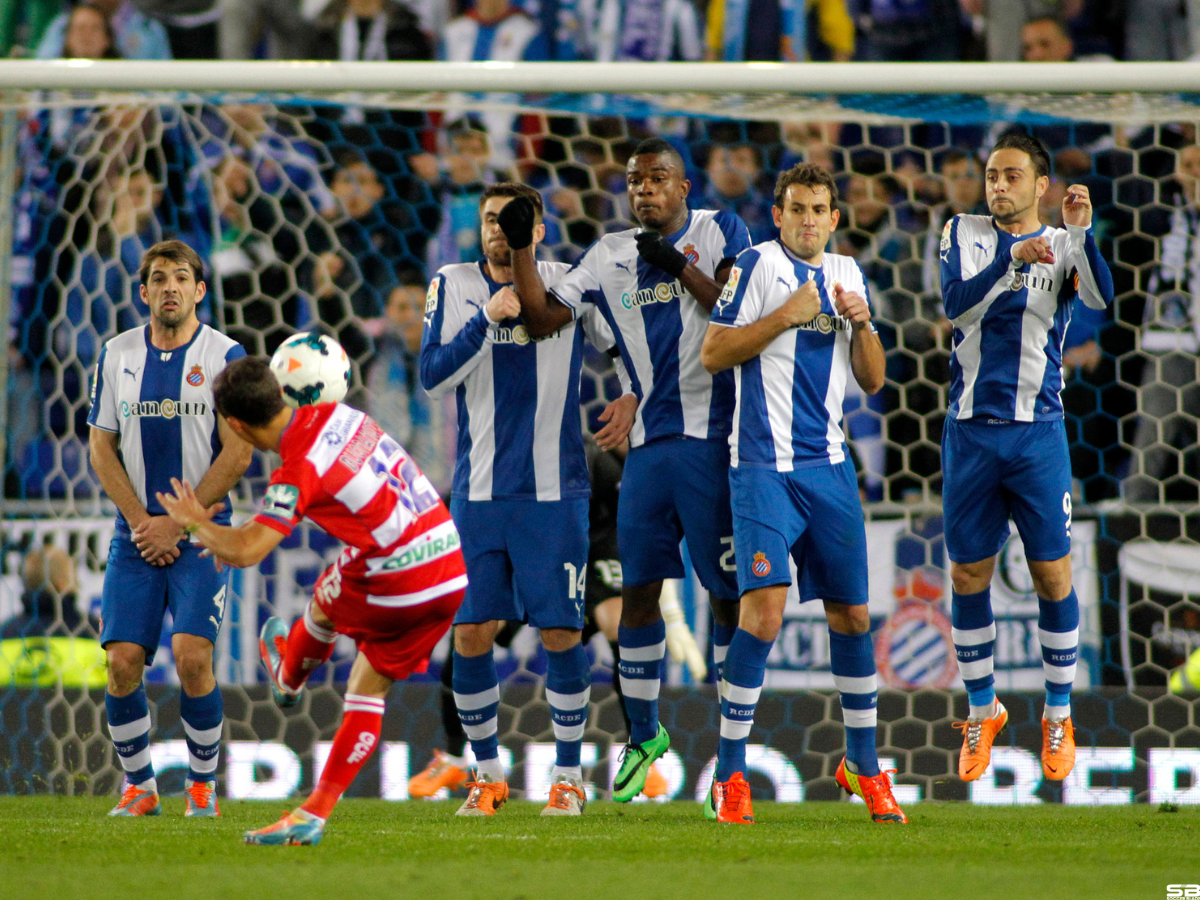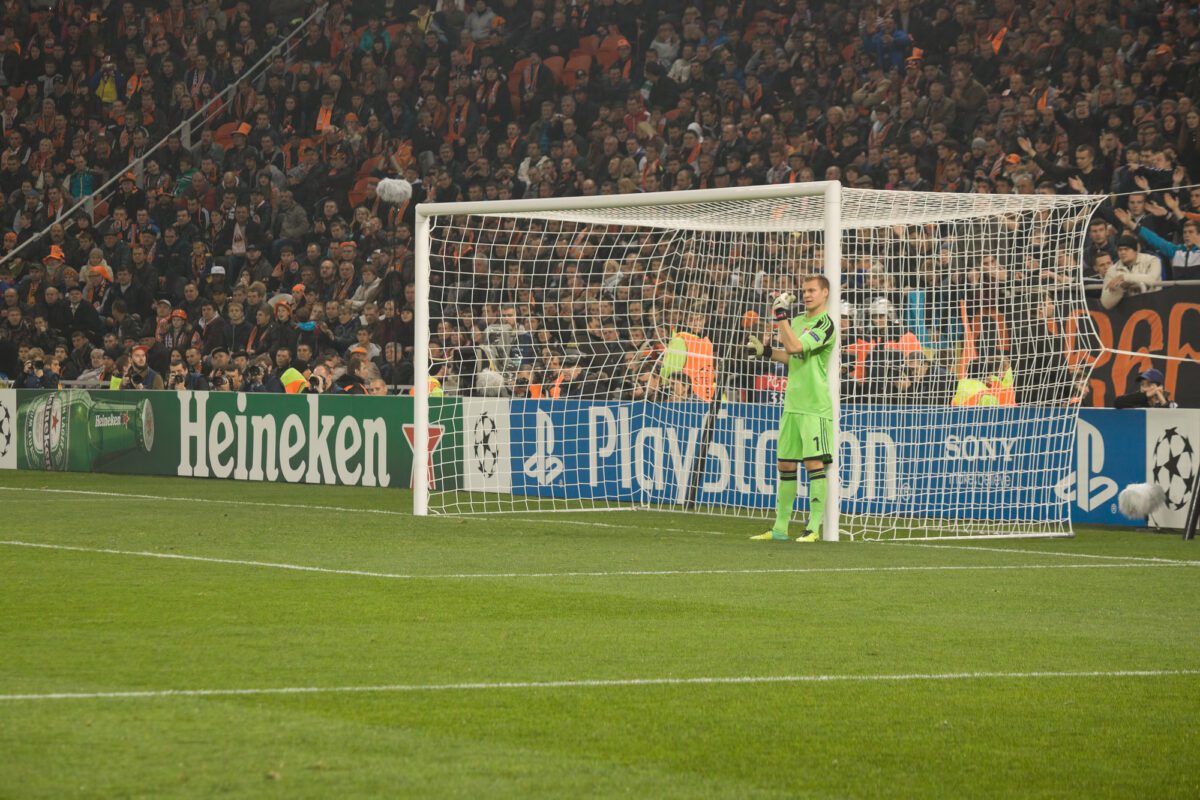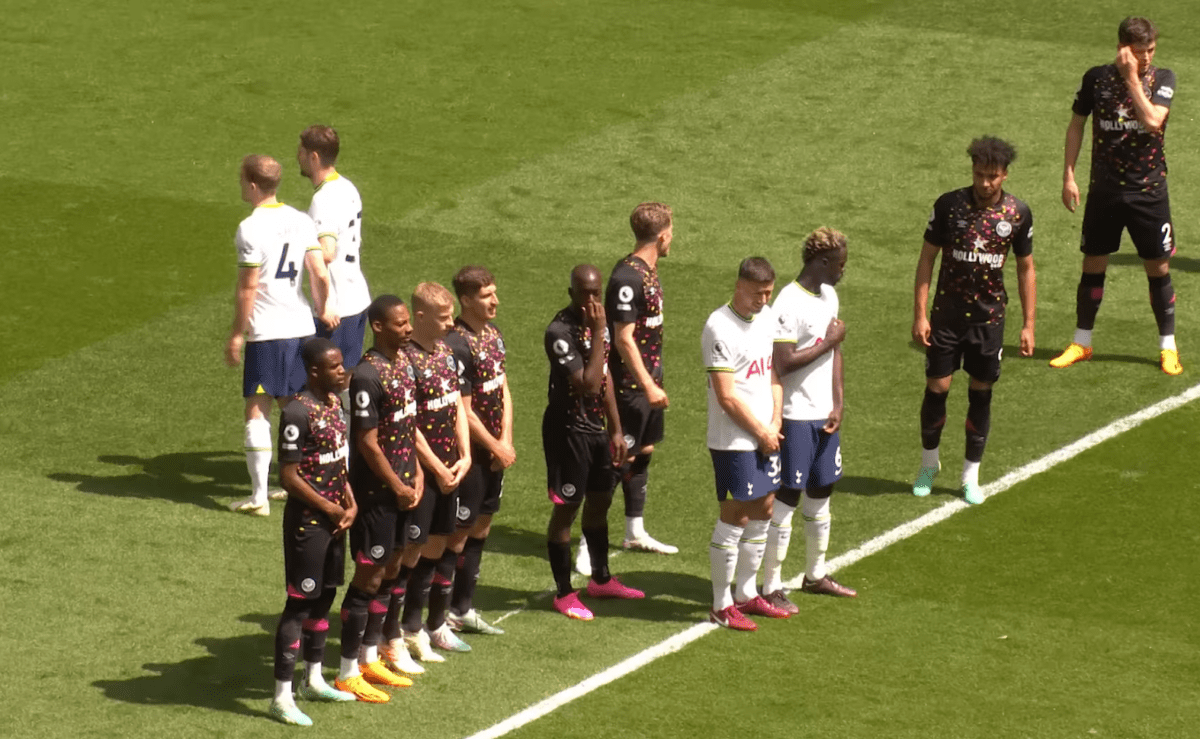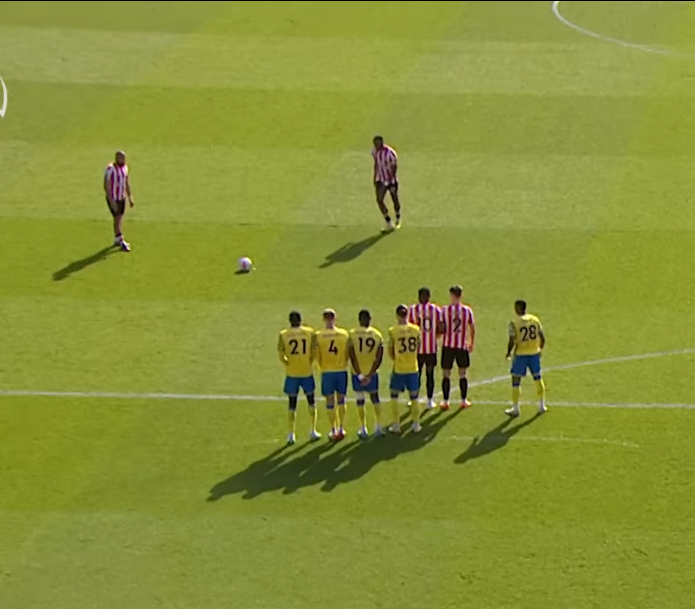

The opposing team will be given a free kick when a team fouls in soccer. Let’s look at a free kick, the different types of a free kick, and how they’re applied in soccer. These rules are hugely important in the game and fascinating to know – By the end of this article, you’ll be in the know.

A free-kick in soccer restarts the game after a team commits a foul. A foul is an offense and is against soccer laws. The opposition stands 10 yards away from the ball for the kick to be taken. A ‘free kick’ is exactly how it sounds. A player gets to kick the ball without any players opposing them.
A free-kick means players have time and space to kick the ball how they want. Players on the opposing team can’t try to tackle for the ball when it’s a free kick. They have to stay away from the ball 10 yards until it’s kicked. Once the ball is kicked, the game restarts.

There are two types of free kicks in soccer: direct free kicks and indirect free kicks. Based on the player’s foul, the referee decides if it’s a direct or indirect free kick.
A direct kick means a player can take a direct shot at the goal and score, while an indirect kick means another player must touch the ball before a goal can be scored. So, a player can shoot directly for a goal from a direct kick.


Often, you’ll see referees counting out steps from the free-kick position. It means they’re counting 10 yards so the opposing players won’t be too close to the free-kick taker.
The kicker can’t touch the ball and then shoot. They can only take one touch, the free kick. Once the ball touches another player, the free-kick taker can touch it again. This prevents players from passing to themselves and shooting for a goal.
A direct kick means the player can shoot directly for a goal. But they don’t have to. It’s their choice. They can pass the ball or cross the ball if they want to.

There are 7 main fouls result in direct kicks. A referee gives direct kicks if a player is careless, reckless, or uses excessive force when committing these fouls:
There are 3 more offenses where a direct kick is given:
These last three offenses are more straightforward because the referee doesn’t have to decide if they’re careless, reckless, or excessive.


A direct kick is awarded in soccer if a player is careless, reckless, or uses excessive force during a game. This usually happens when a player tries to get the ball from an opposing player.
But a direct kick is also awarded for holding an opponent, spitting at an opponent, or handling the ball deliberately. A referee will always give a direct kick for those three offenses. You’ll know it’s a direct free kick when the referee points his arm forward.


Direct free kicks allow a shot on goal without the ball needing to touch another player first. They are often taken by skilled players who can accurately place the ball. Common strategies include:

An indirect free-kick means a goal can’t be scored unless another player touches the ball after the kick. So, the player taking the indirect free kick can’t shoot directly for a goal. If a player shoots and scores from an indirect free-kick, the goal won’t count. The opposing team will be given a goal kick.
See also How Many Players on A Soccer Team/Field/Substitutions (All Ages)But if a player taking an indirect free kick passes to another player, and that player scores a goal, the goal will count. An indirect free kick means passing the ball before a goal can be scored.
Yes, indirect free kicks still exist. Indirect free kicks are most noticeable inside the defending team’s 18-yard box.
The next time you watch a soccer game, you’ll know it’s an indirect free kick when the referee raises their arm. They won’t take their arm down until another player touches the ball or it goes out of play. You’ll see that indirect free kicks still exist when you see that signal.
Like here: This type of free-kick will be mainly given when a goalkeeper picks up a backpass. But indirect free kicks can be given anywhere on the soccer field. The referee will signal for an indirect free kick.
According to the IFAB , 10 main fouls are indirect kicks in soccer. These can be broken into 2 sections: overall play and inside a goalkeeper’s 18-yard box.
An indirect kick is awarded for:
An indirect free kick is awarded if the goalie:
These are the 10 main fouls you’ll see an indirect free kick given for.
Indirect free kick rules are the same as the first 4 direct free kick rules already listed:
But it’s the 5 th rule that makes the difference.
The important difference with an indirect free kick is that the player taking the kick can’t shoot directly for a goal. If a player kicks the ball into the goal directly from an indirect kick, the goal won’t count. It’ll be a goal kick for the opposing team.
So, the ball must touch another player before a goal can be scored. That means an indirect free kick is usually passed to a teammate for them to shoot if it’s close to the goal. If it’s far from the goal, the player taking the kick usually passes to a teammate to restart the game.
 A Wall Of The Free Kick - Taken by Xavi Hernandez" />
A Wall Of The Free Kick - Taken by Xavi Hernandez" />
Indirect free kicks require the ball to touch another player before a goal can be scored. They often involve tactical plays designed to create scoring opportunities:
An indirect free kick in the box usually happens when the goalie does one of the 4 fouls in the Inside a goalkeeper’s 18-yard box section. When committed inside their 18-yard box, the goalie will give away an indirect free kick in the box.